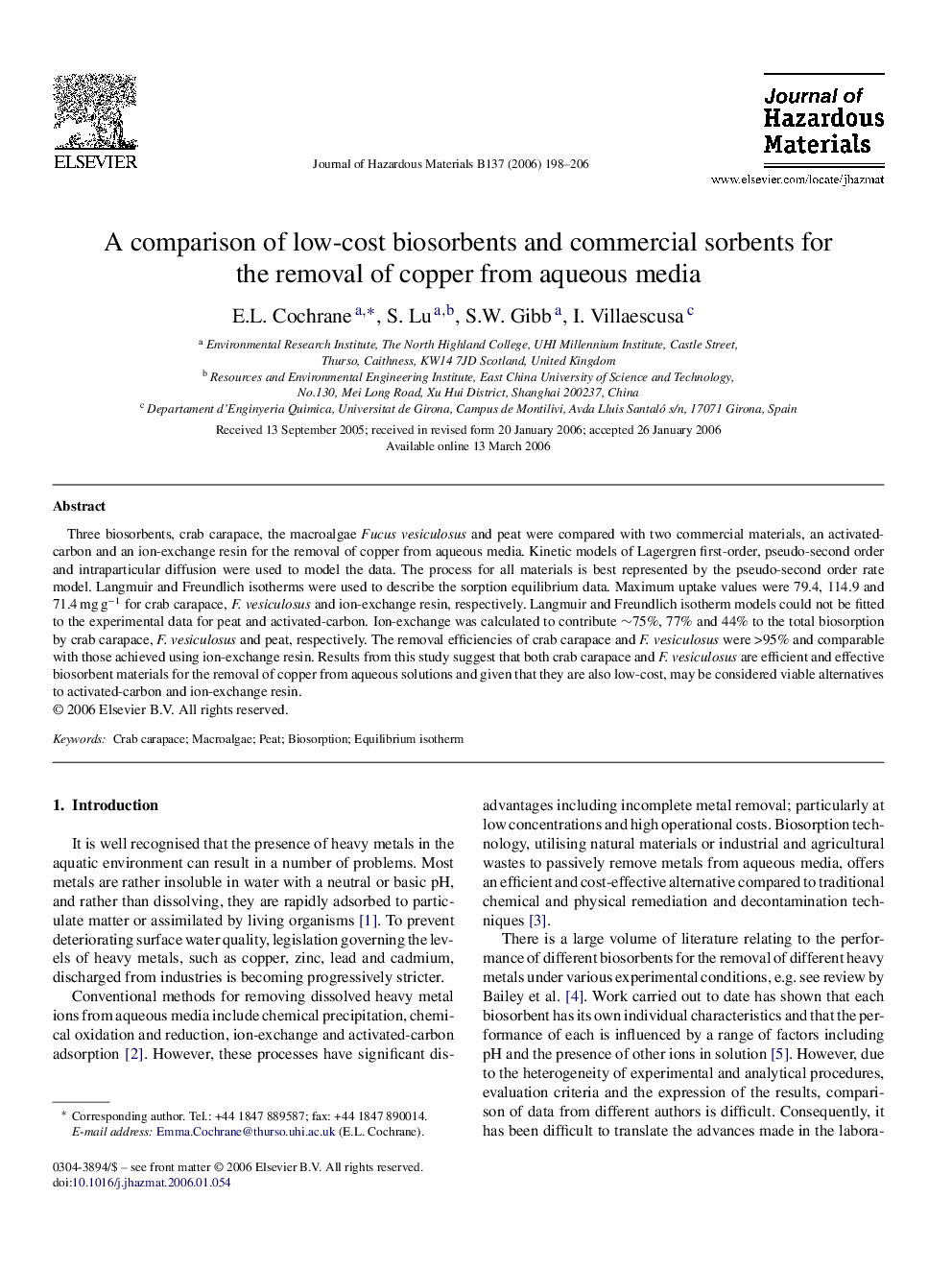| Article ID | Journal | Published Year | Pages | File Type |
|---|---|---|---|---|
| 585441 | Journal of Hazardous Materials | 2006 | 9 Pages |
Abstract
Three biosorbents, crab carapace, the macroalgae Fucus vesiculosus and peat were compared with two commercial materials, an activated-carbon and an ion-exchange resin for the removal of copper from aqueous media. Kinetic models of Lagergren first-order, pseudo-second order and intraparticular diffusion were used to model the data. The process for all materials is best represented by the pseudo-second order rate model. Langmuir and Freundlich isotherms were used to describe the sorption equilibrium data. Maximum uptake values were 79.4, 114.9 and 71.4 mg gâ1 for crab carapace, F. vesiculosus and ion-exchange resin, respectively. Langmuir and Freundlich isotherm models could not be fitted to the experimental data for peat and activated-carbon. Ion-exchange was calculated to contribute â¼75%, 77% and 44% to the total biosorption by crab carapace, F. vesiculosus and peat, respectively. The removal efficiencies of crab carapace and F. vesiculosus were >95% and comparable with those achieved using ion-exchange resin. Results from this study suggest that both crab carapace and F. vesiculosus are efficient and effective biosorbent materials for the removal of copper from aqueous solutions and given that they are also low-cost, may be considered viable alternatives to activated-carbon and ion-exchange resin.
Related Topics
Physical Sciences and Engineering
Chemical Engineering
Chemical Health and Safety
Authors
E.L. Cochrane, S. Lu, S.W. Gibb, I. Villaescusa,
